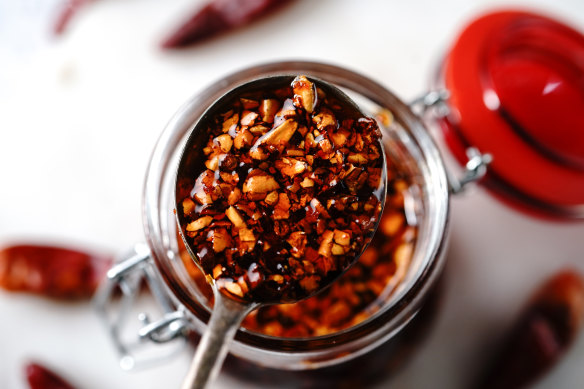Simple painkillers that you can buy over the counter, such as ibuprofen, paracetamol and aspirin, will usually work to resolve a TTH within 20 minutes.

An ill-fitting bra can also be a cause of tension headaches.Credit: iStock
“Beware of taking painkillers too often, as if regularly taken on three or more days a week, they can result in medication-overuse headache,” says MacGregor. “In simple terms, overuse shuts down the body’s natural ability to control pain.”
Signs it’s a migraine attack
About 10 million people in the UK live with migraine, according to the latest report from The Migraine Trust, and migraines are more common than epilepsy, diabetes and asthma combined. (A Federal Budget submission by Migraine Australia from 2021 cited that incidence in Australia could be as high as one in four adults.)
“Migraines occur in attacks, sometimes several times a month, or they may occur just once or twice a year, and they can last anything from a few hours to a few days,” says MacGregor.
“The key features are episodes of headache on one side or both sides of your head, accompanied by nausea (two-thirds of sufferers have this) and sensitivity to light and sound. The pain is so bad that sufferers often find it difficult to continue their usual daily activities and may have to stay in bed.”

Dehydration can be a leading cause of both headaches and migraine.Credit: iStock
A predisposition to migraines can be passed down through families. Triggers include skipped meals, dehydration, sleep deprivation and a lack of exercise.
What to do about it: “A healthy brain needs regular food, water, sleep and exercise, so aim for consistency in these areas,” adds MacGregor.
Doctors recommend taking aspirin: studies have shown that a single dose of 900 milligram aspirin is as effective as 50mg to 100mg of sumatriptan, a prescription medication for migraines. But, for many, a cold compress and a dark, quiet room work just as well.
Those who suffer most might be prescribed a medication called triptan – not a painkiller per se, but specific to migraine management. “In the early part of a migraine attack, blood vessels on the surface of the brain dilate and trigger a cascade of chemical changes,” says MacGregor.

Some migraine sufferers who experience auras describe seeing black spots, while others see colours.Credit: iStock
“These are processed by the brain and ultimately perceived as pain and all the other typical migraine symptoms of nausea, light sensitivity and so on. Triptans constrict these blood vessels and prevent the headache developing into a full-blown migraine attack.”
A new type of treatment known as CGRP mAbs is the first preventative medicine to be prescribed for migraine, given by injection. (CGRPs are available in Australia on prescription for sufferers of chronic migraines.)
When the pain is so bad, you can’t sit still
Sometimes referred to as “suicide headaches” because of the severity of the pain, cluster headaches are thankfully uncommon, affecting about two in 1000 people. They are more common in men than women.

Spicy foods may trigger cluster headaches in certain people.Credit: iStock
Attacks are characterised by severe pain on one side of the head, accompanied by agitation and restlessness.
“Such headaches typically occur at night, in clusters lasting six to eight weeks, often at the same time of year, with periods of remission in between,” says MacGregor.
“Attacks tend to come on quickly, last between 30 to 90 minutes, and can occur several times a day, too. They’re so painful that sufferers can’t keep still, sometimes even banging their heads because of the pain. The intensity is often centred around one eye, which can become red and watery, while the other side of the face is completely unaffected.”
Loading
Attacks often wake the sufferer within an hour of falling asleep and can be triggered by alcohol and hot, spicy foods.
“The cause of cluster headaches is unknown, but research has highlighted changes in a part of the brain known as the hypothalamus, the area that controls the body clock, which might explain why clusters often occur at the same time of year and the same time of day or night,” adds Prof MacGregor.
What to do about it: effective treatments include sumatriptan injections and nasal sprays, which work to constrict blood vessels. These stop pain signals being sent to the brain and block the release of certain natural substances that cause pain, nausea and other symptoms of migraine.
New research is also underway looking at the cluster-relieving effects of psilocybin, a psychoactive compound found in magic mushrooms.
Is it my hormones?
According to the UK National Migraine Centre, more than half of women who get migraines notice a link with their periods. “Some women are sensitive to the natural drop in oestrogen just before or in the first few days of their period, or during the hormone-free interval of combined hormonal contraception,” says MacGregor.
The best way to tell if your headaches are hormonal is to keep a diary over several months. If they’re linked, see your GP, as managing the period problem may itself help the headaches.
What to do about it: “Treatment to prevent attacks can range from standard migraine prevention to hormonal contraceptives,” says MacGregor. “And if you continue to have headaches during the hormone-free week of contraception, you may be able to take several packs for three to five months without a break.”
Hormone headaches may also increase in prevalence during perimenopause, due to the natural hormone fluctuations that occur at this stage of life. A prescription of HRT from your GP or specialist, who may advise a patch or gel with continuous progesterone, may help.
Hormonal headaches may get more severe in the run-up to the menopause, due to the drop in oestrogen, but the good news is that the menopause tends to get rid of them altogether.
The Telegraph, London
Make the most of your health, relationships, fitness and nutrition with our Live Well newsletter. Get it in your inbox every Monday.
Stay connected with us on social media platform for instant update click here to join our Twitter, & Facebook
We are now on Telegram. Click here to join our channel (@TechiUpdate) and stay updated with the latest Technology headlines.
For all the latest Life Style News Click Here
For the latest news and updates, follow us on Google News.
